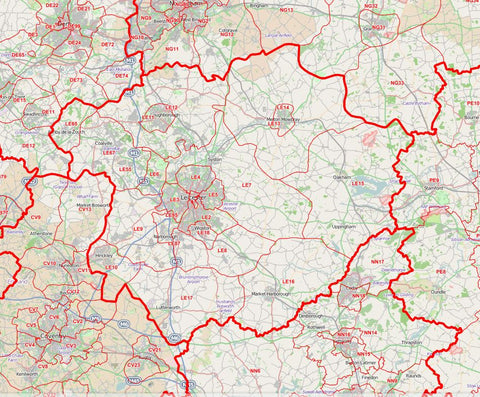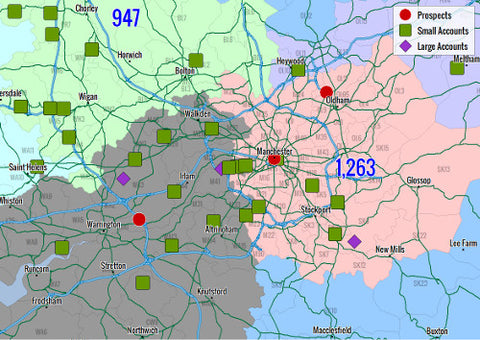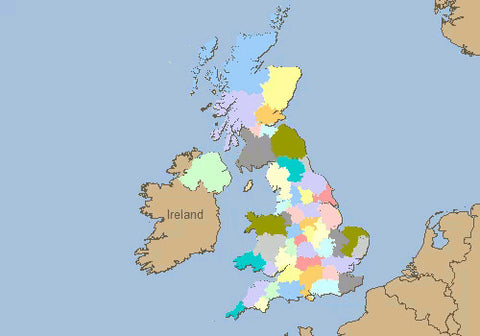Mapping Software & GIS
Mapping software has been around for a many years but the internet has really brought computerised maps into daily use over the past 20 years.
The problem with 'mapping software' is that the price you pay generally depends upon two key factors:
1. The software itself and what it is capable of; and
2. The data used in the maps. The amount of data you need and the more detailed and more up to date it is - the more expensive it is. (However Ordnance Survey have recently released a lot of their data for free which has chnaged this for the better)
To make life simple, this article categorises mapping software into 3 broad 'camps' which are described below along with an overview of which solutions are best for various requirements. If you are not sure which solution is best for you and you want some free advice then just use the brief us form to let us know what you want to do and we will offer you impartial advice on the best solution.
Free Maps
 Free computer maps are generally limited to internet-based solutions and, in the UK, the main providers of free mapping sites are Google, Microsoft Live Maps and Multimap.
Free computer maps are generally limited to internet-based solutions and, in the UK, the main providers of free mapping sites are Google, Microsoft Live Maps and Multimap.
In addition to these, you can download Google Earth for free and play for hours exploring the world.
All of these systems provide a detailed level of information (streets) for the UK and allow simple navigation tools to find a location of interest. Most also allow you to measure distances, add points of interest or calculate routes between locations.
Applications
These systems are ideal for visualising simple data geographically as general reference tools or for planning routes.
Desktop Business Mapping
 For many businesses, maps play an important strategic and operational role and the free map systems described above don't offer the right information or provide enough functionality to do what they need. For example many businesses rely on maps to:
For many businesses, maps play an important strategic and operational role and the free map systems described above don't offer the right information or provide enough functionality to do what they need. For example many businesses rely on maps to:
1. Target mailing campaigns to consumer demographics,
2. Create, optimise and manage sales territories
3. Create and communicate franchise areas
3. Analyse customer concentrations across a region and so on.
These types of applications require additional data (such demographic information or postcode data) and additional functionality in the software.
At the moment there is really only one choice in this area of entry-level business mapping software at a reasonable price which is Microsoft MapPoint . Previous versions have had mixed reviews but, for a mapping system costing less than £400 it is a good option and hopefully the new version has ironed out any previous problems.
. Previous versions have had mixed reviews but, for a mapping system costing less than £400 it is a good option and hopefully the new version has ironed out any previous problems.
Applications
These systems are ideal for undertaking common business analysis and planning functions such as creating sales territories, mapping your own customer or sales data, mapping population demographics and so on.
Geographic Information Systems
 At the top of the mapping software in terms of power and sophistication range are the Geographic Information Systems. Before the internet and the likes of Google and Microsoft got involved - these were the only providers of PC based mapping software.
At the top of the mapping software in terms of power and sophistication range are the Geographic Information Systems. Before the internet and the likes of Google and Microsoft got involved - these were the only providers of PC based mapping software.
These systems are essentially completely customisable. You can choose the features you want and the data you need to be included in your system but, as a result, they are not cheap. A basic system from a supplier such as Pitney Bowes MapInfo or ESRI is likely to cost you in the region of £5,000+ and the chances are there will be annual renewal fees for the software and data as well. And this is just to use the system on one PC!
But what these systems don't do isn't worth knowing about. Optimisation techniques, 3D visualisation, cartographic manipulation and so on - these systems are not for the faint-hearted and generally require training and support services to help you get the most our of your investment.
Applications
Such systems are used in areas where they really do provide indispensible work and highly profitable returns. Examples are store location optimisation for large retailers; environmental risk assessment for insurance, sales territory management for FMCG companies. Where deployed correctly, these systems are certainly worth their weight in gold...




 Free computer maps are generally limited to internet-based solutions and, in the UK, the main providers of free mapping sites are Google, Microsoft Live Maps and Multimap.
Free computer maps are generally limited to internet-based solutions and, in the UK, the main providers of free mapping sites are Google, Microsoft Live Maps and Multimap.
 At the top of the mapping software in terms of power and sophistication range are the Geographic Information Systems. Before the internet and the likes of Google and Microsoft got involved - these were the only providers of PC based mapping software.
At the top of the mapping software in terms of power and sophistication range are the Geographic Information Systems. Before the internet and the likes of Google and Microsoft got involved - these were the only providers of PC based mapping software.



